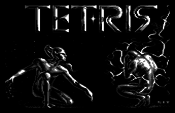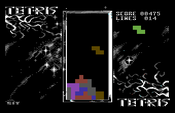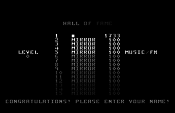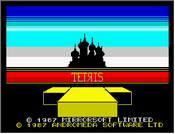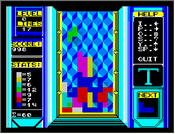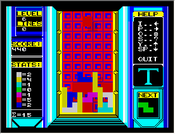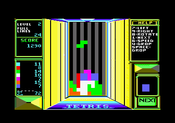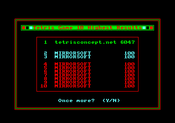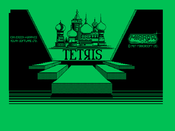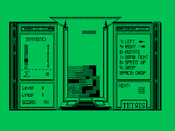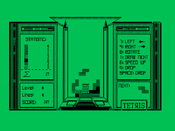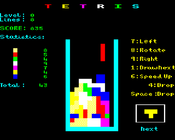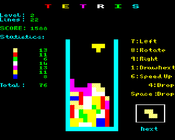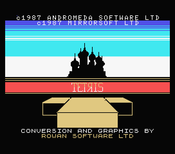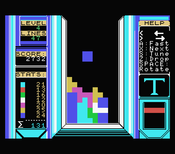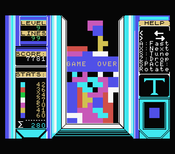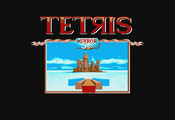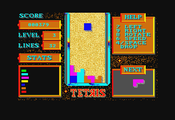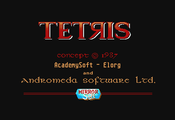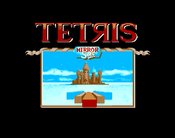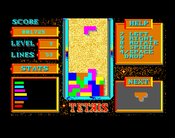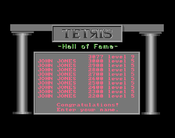Tetris (Mirrorsoft): Difference between revisions
No edit summary |
No edit summary |
||
| Line 128: | Line 128: | ||
[[Category:Games List]] | [[Category:Games List]] | ||
[[Category:Classic computer games]] | |||
Revision as of 18:43, 14 May 2019
| Tetris | |
|---|---|
| Developer(s) | Mirrorsoft, Rowan Software |
| Publisher(s) | Mirrorsoft |
| Platform(s) | Various |
| Release | First released for IBM PC on 27th Jan 1988. |
| Gameplay info | |
| Next pieces | 1 |
| Playfield size | 10x20 |
| Hold piece | No |
| Hard drop | Yes, locking |
| Rotation system | Various |
Mirrorsoft's version was the very first commercial release of Tetris in the world. It was unveiled at the Jan 1988 Which Computer? Show and hit the shelves in the UK on the 27th of that month. During the following three weeks, it was also released for the following home computer platforms: Commodore 64, ZX Spectrum, Amstrad CPC, Amstrad PCW, BBC Micro/Acorn Electron, MSX, Atari ST, and Amiga.
Along with the version developed by Mirrorsoft's American sister company, Spectrum Holobyte, it was originally released under bogus licensing. However, contracts were later made between Andromeda Software (the sublicensing party), and Elorg, which secured the legality of the products.
IBM PC Version
- Main article: Tetris (PC, Spectrum Holobyte)
This was a repackaged version of the Spectrum Holobyte version.
Commodore 64 Version
Memorable for its stirring and epic 25 minute long soundtrack composed by Wally Beben, and also for the title artwork by Stephen Thomson, featuring two naked figures in monochrome. Option to choose either music or FX, but not both.
Rotation System
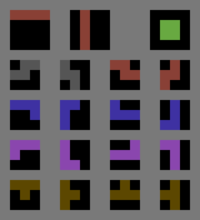
Pieces that fit in a 3x3 grid are aligned to the top-left corner for every rotation, and do not kick.
Gameplay
Pieces don't have a set color, and are instead assigned a random color of blue, gray, green, brown, red, or purple.
Before starting, the player can choose which level from 0-9 to start from. Fall speed is increased with level.
The player earns points for placing pieces, clearing lines, and hard drop distance. Contrary to newer games, more points are not awarded for multi line clears like doubles, triples, or tetrises.
| Level | Line clear | Piece |
|---|---|---|
| 0 | 8 | 5 |
| 1 | 13 | 5 |
| 2 | 20 | 6 |
| 3 | 26 | 6 |
| 4 | 32 | 7 |
| 5 | 38 | 7 |
| 6 | 43 | 8 |
| 7 | 50 | 8 |
| 8 | 55 | 9 |
| 9 | 62 | 9 |
ZX Spectrum Version
The 48k version has title music only, and sound effects during gameplay. Lines are cleared sequentially, and play a tone with pitch determined by the height.
The 128k version had different title music, and also a tune that played during gameplay. Options allowed for either tune or effects, but not both at the same time. Lines cleared all at once, and only one sound effect was used.
Amstrad CPC Version
Amstrad PCW Version
BBC Micro/Acorn Electron Version
Features a dire warning at the start mentioning how the game has been banned in its native Russia due to it being dangerously addictive. No music is present, but a tone plays when pieces lock in place, and the tone's pitch is determined by the height when the piece locks.
MSX Version
Atari ST Version
Almost identical to the Amiga version, with only a slight amendment to the copyright notices to give credit to "AcademySoft - Elorg".
Amiga Version
Featured same title screen music and in-game music as Spectrum 128 version, composed by David Whittaker. Background "fuzzy yellow static" animation could be frozen to enhance visibility. The lines counter maxed out at 99. Six digits were provided for counting score, which would presumably max out at 999999.
See also
External links
- Manual scan
- World of Spectrum page on the ZX Spectrum version
